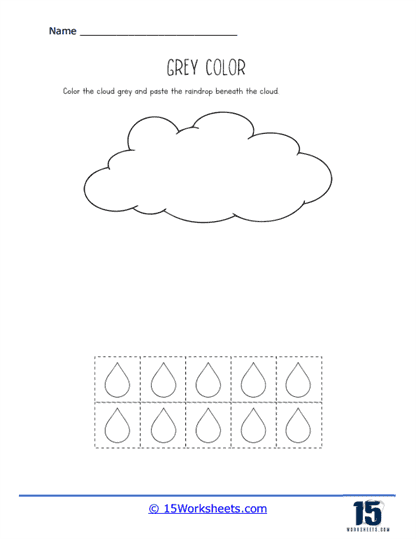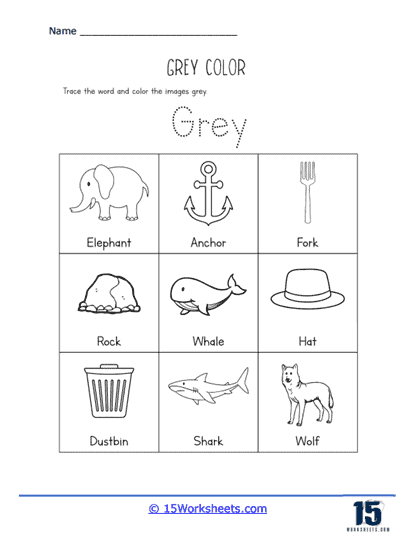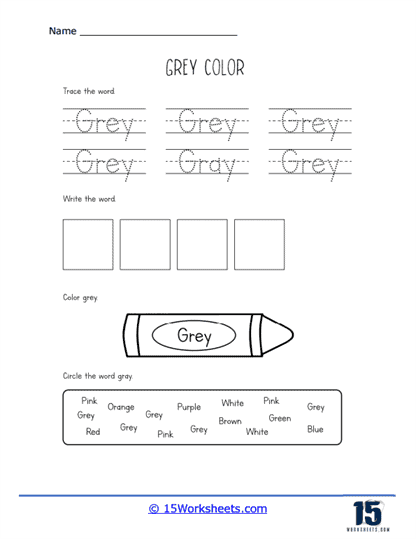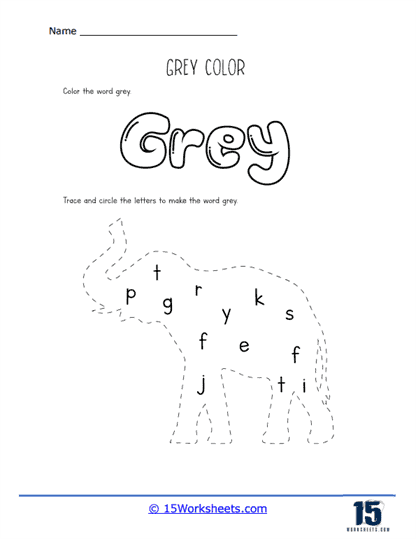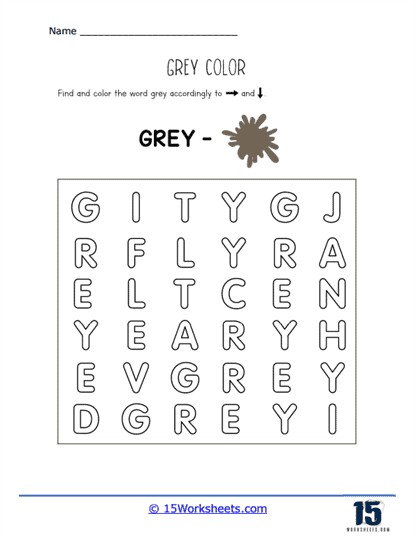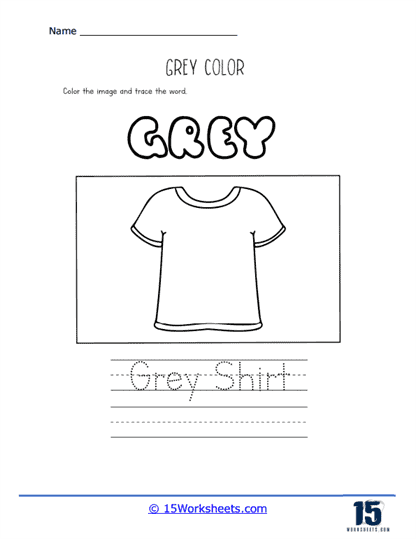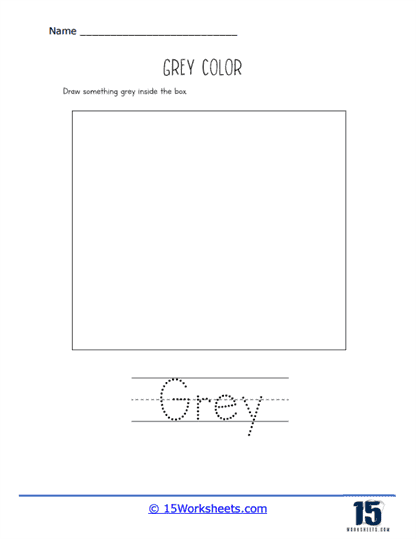Grey Worksheets
All About These 15 Worksheets
Dive into the interesting world of the color grey with this comprehensive series of Kindergarten worksheets. This collection is designed to introduce young learners to the concept of colors, specifically on the color grey. Through a variety of interactive exercises, students will develop familiarity with the color grey. These worksheets also help students develop their color recognition skills, enhance their vocabulary, and engage in hands-on activities that promote creativity and critical thinking. Through these worksheets, students will:
- Practice identifying and coloring objects that are grey, reinforcing their understanding of the color and developing visual discrimination skills;
- Engage in tracing exercises that focus on tracing the color word “grey” and writing it independently, promoting letter formation and word recognition;
- And learn about objects and symbols commonly associated with the color grey, fostering their vocabulary development.
Through this engaging series of Grey worksheets, young learners will deepen their understanding of colors while specifically exploring the characteristics and associations of the color grey. By participating in a variety of activities that involve color recognition, tracing, writing, drawing, and coloring, students will develop their visual discrimination skills, enhance their vocabulary, and foster creativity.
These worksheets also provide opportunities for hands-on exploration, problem-solving, and cognitive development. By engaging with these exercises, students will develop a love for colors, strengthen their fine motor skills, and cultivate an appreciation for the unique qualities of the color grey. Ultimately, this collection serves as a stepping stone for future color exploration and lays the foundation for a lifelong appreciation of art, creativity, and self-expression.
Getting to Know Grey
Grey, sometimes spelled gray, is a neutral color situated between black and white. It is often considered a color of balance, evoking feelings of calmness, stability, and sophistication. Grey has several properties, cultural meanings, and applications.
Shades and Tints
Grey comes in numerous shades, varying from light to dark. The lightness or darkness of grey is determined by the amount of white or black mixed with it. Light grey shades have a higher proportion of white, while dark grey shades contain more black. Tints of grey can also be created by adding a small amount of color, resulting in hues like blue-grey, green-grey, or pink-grey.
Cultural Significance
Grey often symbolizes neutrality, calmness, and balance. It can represent modesty, practicality, and maturity. Grey is sometimes associated with feelings of detachment, indifference, or even gloominess. In some cultures, grey is linked to wisdom or age, as it is the color of grey hair. The color grey has different meanings across cultures and contexts; for example, in Western societies, grey is commonly used for formal attire, such as business suits, while in certain spiritual practices, it represents detachment from materialism.
Art
Grey has been utilized in various art and design contexts throughout history. Artists have employed grey pigments, such as charcoal or graphite, to create sketches, drawings, and paintings. Grey is also used in photography, particularly in black and white or monochromatic images, where it provides depth and tonal variation. In interior design, grey is often used as a neutral base color, allowing for the addition of accent colors to create a harmonious and sophisticated aesthetic. Grey is also popular in fashion, where it is considered a versatile and timeless color that can be combined with various other colors and patterns.
In Nature
Grey is found in nature in various forms, such as in rocks, minerals, and animals. Examples include grey limestone, granite, and shale, as well as grey animals like wolves, dolphins, and certain bird species. Grey is also the color of storm clouds, signifying the potential for rain or other weather changes.
Science
In science and technology, grey is often used to represent neutrality, balance, or a midpoint. For example, the grey scale is used in photography and digital imaging to measure and display the brightness and contrast of an image. Grey is also utilized in the field of materials science, with grey cast iron being a common engineering material.
In summary, grey is a neutral, balanced color that has various shades, cultural meanings, and applications in art, design, fashion, science, and technology. Its versatility and timeless appeal make it an essential color in many aspects of human life, from the natural world to the built environment.


